Most states now fluoridate water supplies, and there’s been a growing controversy about this decision for decades.
As water treatment specialists, we dedicate our working lives to extensively testing and reviewing water filters, and from our research into the data and our own experience as consumers, here are our top recommended methods to effectively remove fluoride from your water.
📌 Key Takeaways
- The best ways to remove fluoride from water are with reverse osmosis filters, bone char carbon filters, activated alumina filters, and water distillers.
- Boiling water or using a simple activated carbon filter is NOT an effective way to remove fluoride.
| Method | Effectiveness |
|---|---|
| Reverse Osmosis Filtration | High (80-99%) |
| Water Distillers | High (90-99%) |
| Bone Char Carbon Filters | High (Up to 99%) |
| Activated Alumina Filters | Moderate-High (70-99%) |
| Simple Activated Carbon Filters | Low |
| Ceramic Water Filters | Not Effective |
| KDF Filters | Not Effective |
| Ultrafiltration | Not Effective |
| Boiling Water | Not Effective |
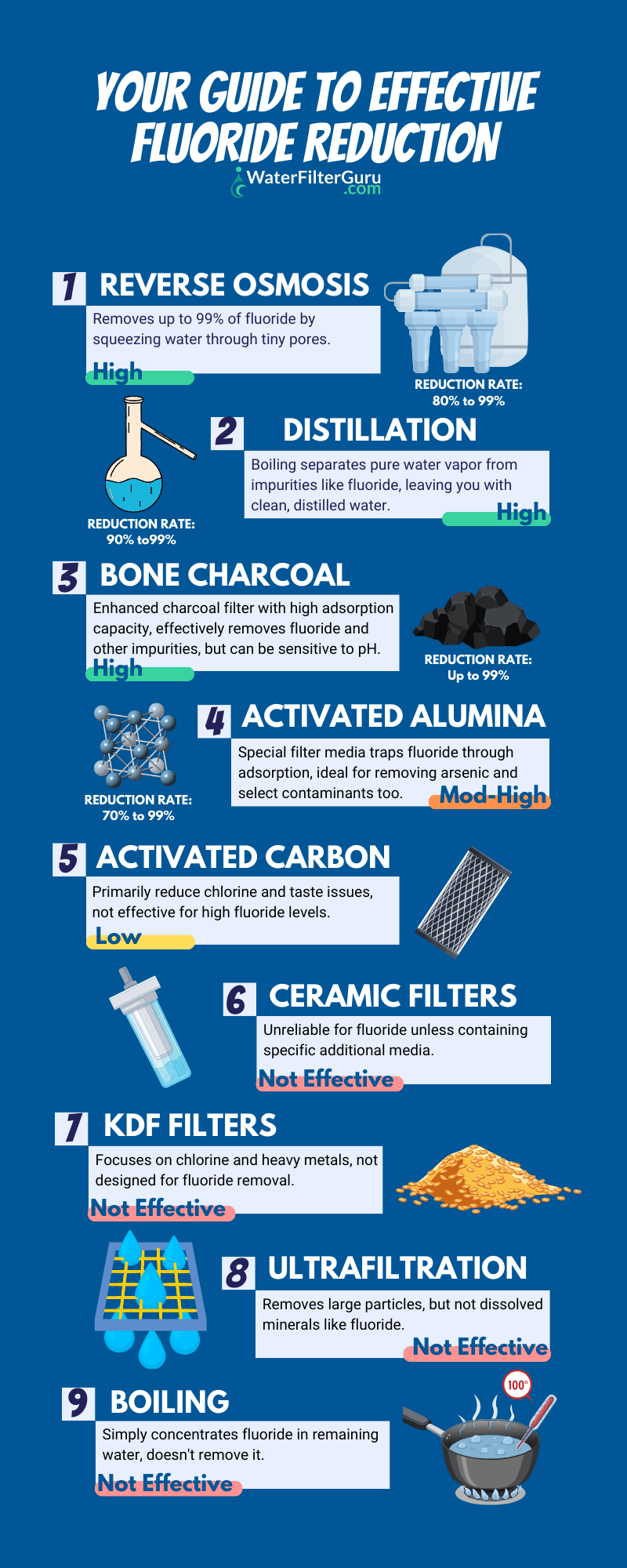
Table of Contents
⚗️ Reverse Osmosis Filtration
Fluoride reduction rate: 80-99%
Reverse osmosis water filtration is one of the most popular ways to greatly reduce fluoride from drinking water.
How it Works
A reverse osmosis filtration system combines a sediment filter, one or two carbon filters, and a semi-permeable membrane to remove up to 99.9% of TDS (total dissolved solids), including impurities like chlorine, bacteria and viruses, VOCs, heavy metals and pesticides.
It’s the semi-permeable membrane in an RO system that can remove fluoride, with a pore size of around 0.0001 microns – small enough to completely block fluoride and prevent it from passing through. The blocked impurities, including fluoride, rebound off the membrane and are drained out of the system with a small amount of wastewater.
Reverse osmosis systems are usually installed beneath a kitchen sink. Some reverse osmosis filters are countertop models, and some are point of entry (POE) systems for whole-home water treatment.
The Evidence
- A study of 10 different RO systems in India reported an average fluoride removal rate of 50.37%–84.62% – as well as hundreds of other contaminants that are commonly found in drinking water.
- Another study from 2023, which tested an RO membrane in different conditions, reported that the membrane rejected 92.5% to 98.6% of fluoride, depending on the applied transmembrane pressure.
Best For
Folks who want to remove as many contaminants as possible from their water, including the majority of fluoride.
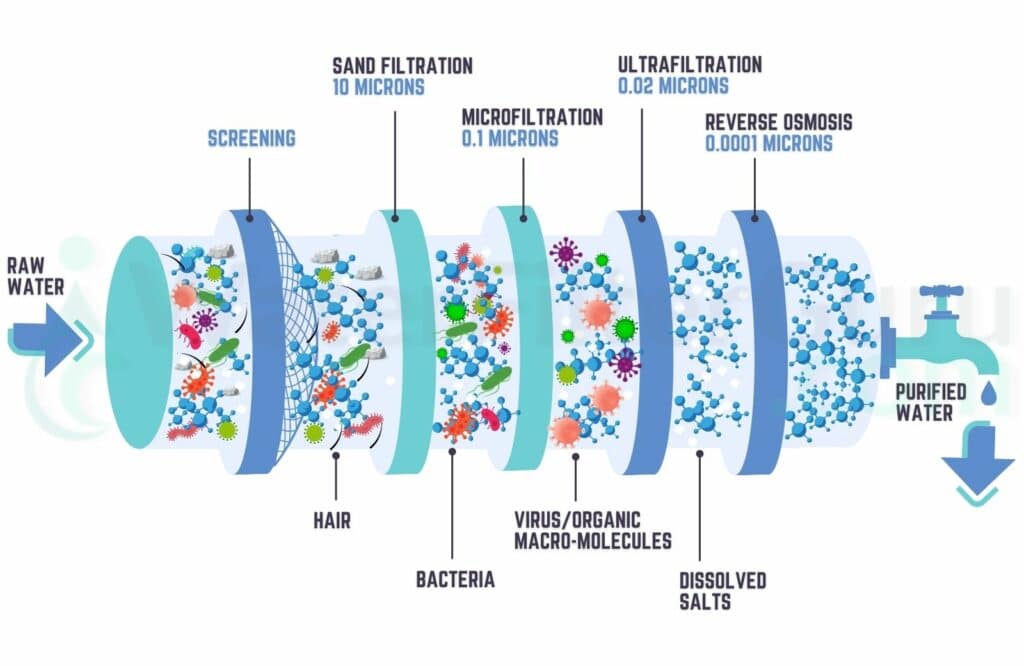
🚰 Distillation
Fluoride reduction rate: 90-99%
A water distiller system is another highly effective way to remove the majority of fluoride from drinking water.
How it Works
An at-home water distiller can be set up in a matter of minutes – just assemble it on your countertop and plug it into an electricity source, then add water to the unit’s boiling chamber and switch on the machine.
The distiller boils the water and causes it to evaporate. This water vapor travels into a separate part of the distiller and condenses. The condensed water drips out of the spout, filling up a clean pitcher.
The majority of contaminants, including fluoride, sodium, water hardness, and dissolved solids, are unable to vaporize with water, and are left behind in the boiling chamber. When you clean out the boiling chamber, you’ll remove these contaminants.
The biggest setback of water distillers is the speed of distillation – it takes up to 5 hours to produce just 1 gallon of distilled fluoride-free water.
The Evidence
- One study conducted in the Upper East Region of Ghana, which is known for its high groundwater fluoride levels, concluded that a solar water distiller significantly decreased the fluoride concentration in the water, to below the recommended WHO limit.
- Another 2019 study by the IRJET found that solar distillation had an average fluoride % removal efficiency of almost above 90% when combined with adsorption.
Best For
Anyone looking for an affordable non-RO alternative for removing fluoride and thousands of other trace impurities.
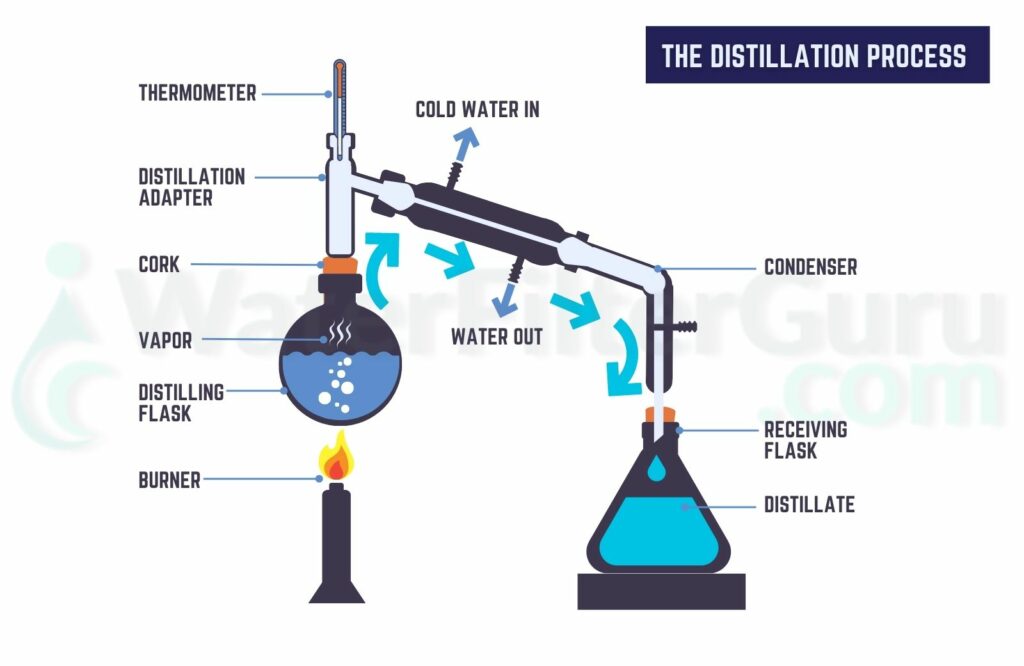
📥 Activated Alumina Filters
Fluoride reduction rate: 70-99%
Activated alumina filters, made from aluminum oxide, are commonly used to remove between 70% and 99% of fluoride in a public water supply.
How it Works
Activated alumina filters are typically found in whole-home, countertop, and under-sink water filtration systems.
They work by adsorbing contaminants, causing them to stick to their media and trapping them. Activated alumina filters use adsorption, like carbon filters, but don’t get these two confused – they both attract and remove different groups of contaminants.
The Evidence
- One 2010 Water Research study concluded that using activated alumina and adsorption is superior to other fluoride removal techniques, citing the “strong affinity between aluminum and fluoride” as the reason for this.
- Additionally, a 2013 Journal of Chemistry review of several studies cited a study in which activated alumina offered a fluoride removal efficiency of 99% for a water supply with a pH of 6.5, but noted a couple of setbacks of this method of filtration, including a slow rate of adsorption.
- Using activated alumina to remove fluoride in public drinking water is even recommended as a cost-effective solution by the EPA.
Best For
Folks who want to remove fluoride, arsenic, and a few select drinking water contaminants without the expense of reverse osmosis or the time-consuming distillation process.
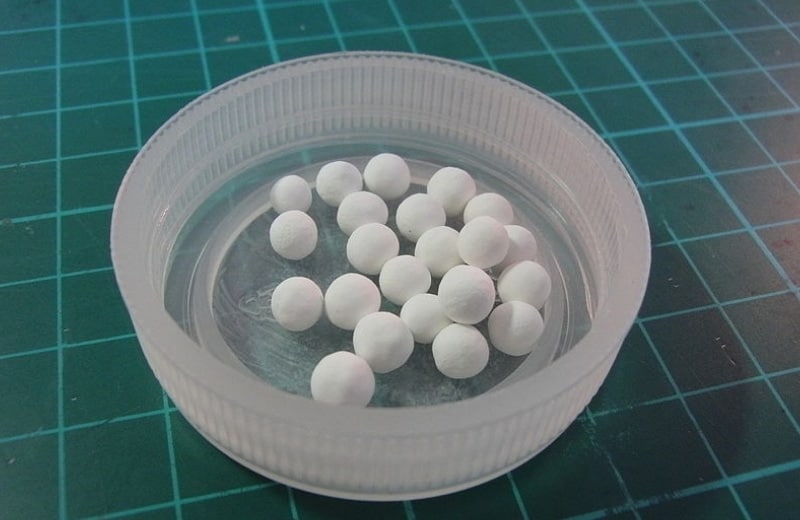
🔮 Bone Charcoal Carbon Filters
Fluoride reduction rate: Up to 99.9%
Bone char charcoal is one of the oldest methods of filtration and is another effective way to treat a fluoridated water supply. It’s more efficient than reverse osmosis as it doesn’t waste water during filtration.
How it Works
Bone char is made using a careful process that enhances the adsorption ability of the charcoal carbon, making it capable of trapping additional contaminants, including fluoride.
Generally, bone char filters are used in multi-stage filtration systems or are combined with other filtration media to enhance their ability to remove a broad range of contaminants.
The Evidence
- A 2021 study on the use of granular activated carbon and bone char charcoal for fluoride removal found that this combination of filer media “exhibited excellent results”, showcasing 100% fluoride removal efficiency when used to filter 5 mg/L fluoride out of water, throughout the 165-minute experimental period.
- The same study noted a decreased fluoride reduction with an increased pH in the feed water (99.8% in water with a pH of 3 and 99.5% in water with a pH of 9).
Best For
People who want the benefits of a carbon filter with the enhanced ability to remove fluoride.
⚠️ Which Water Treatment Methods Are Not Effective for Fluoride Removal?
There are a couple of water treatment methods that aren’t usually suitable for fluoride reduction:
Simple Activated Carbon Filters
A simple activated carbon filter, often found in water pitcher filters and under-counter filter models, won’t generally make much difference to your water’s fluoride content.
This type of filter is designed primarily to reduce chlorine, volatile organic compounds, pesticides, and poor tastes and odors. While adsorption can reduce some fluoride, it takes a specialized activated carbon, such as phosphoric acid activated carbon, to effectively and consistently reduce high concentrations of fluoride.

KDF Filters
KDF filters, often found alongside carbon filters in multi-stage point-of-entry and point-of-use filtration systems, are not designed for fluoride removal.
There are different types of KDF filtration media, which can remove contaminants including chlorine, water-soluble heavy metals, scale, bacteria, and fungi – but not fluoride.
Ultrafiltration
Ultrafiltration uses membrane separation, similar to reverse osmosis. It’s another great choice for folks who want to remove a broad range of contaminants from their water.
But the pore size of a UF membrane is only around 0.01 and 0.1 microns, and UF membranes can’t remove any minerals or salts – including fluoride – from water.
Ceramic Water Filters
We could find no definite evidence that ceramic water filters can remove fluoride, although there are a few ceramic filters on the market that can reduce fluoride levels.
From what we can tell, the ceramic filters that are capable of removing fluoride contain an additional filter media that targets this mineral. It’s not the ceramic filter itself that traps fluoride.
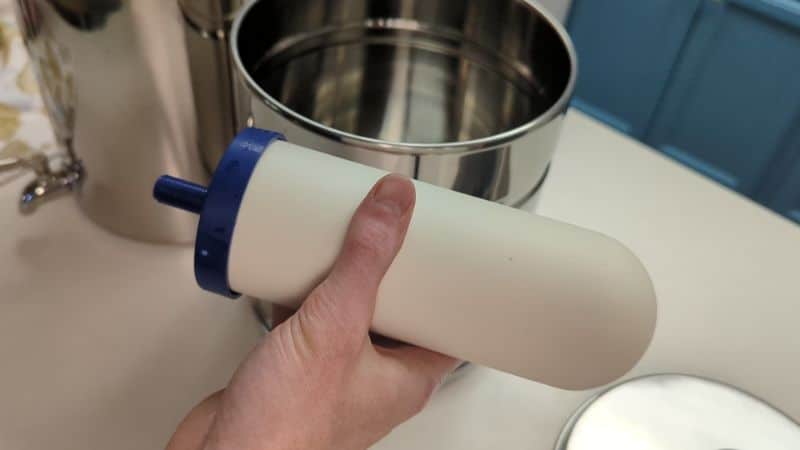
Boiling Water
Simply boiling water can’t be used to eliminate fluoride. It’ll just cause some of the water to evaporate, meaning there’s the same concentration of fluoride in a smaller volume of water.
The only way to effectively remove fluoride is by physically filtering it out of your water, or, if you want a DIY project, making a homemade distiller. This will separate the water molecules from the impurities, effectively removing fluoride.
📑 Final Word
If you want to avoid excessive fluoride exposure, removing fluoride from your drinking water is the best practice. We wrote this article to serve as a go-to resource for folks looking for a list of all the most effective methods to remove fluoride from drinking water.
If you do choose to invest in a fluoride-removing water filter, make sure to pay extra attention to your dental health. Bush your teeth twice a day (ideally with fluoride toothpaste, which you can spit out after brushing), eat a well-balanced diet, and visit your dentist for routine checkups and cleaning.
👉 See the Best Filters for Fluoride Removal in 2025 right here
🧠 How to Remove Fluoride From Water: FAQ
Should I remove fluoride from water?
Though drinking water sources don’t contain a large amount of fluoride, many folks would rather not ingest a mineral that has potential health concerns, as supported by hundreds of studies (see this overview of the research by Fluoride Alert). If you’re concerned about your family’s fluoride intake, we strongly recommend installing a water filter to remove this impurity.
Does fluoride evaporate out of water?
No, fluoride doesn’t evaporate out of water. Unlike chlorine, fluoride won’t dissipate over time if you leave a glass of water exposed to air. The only way to remove fluoride from water is with physical filtration.
Does holy basil remove fluoride from water?
Yes. Studies have found that holy basil can remove 31% to 42% fluoride when added to boiling tap water. However, water filters are a more effective, and more convenient way to treat fluoridated tap water.
What is the best way to remove fluoride from water?
In our opinion, the best way to remove fluoride from water is with a reverse osmosis system, which also removes up to 99.99% of the majority of other total dissolved solids (TDS). If you’re specifically concentrating on fluoride removal, bone-char carbon filters are our second-best recommendation.
Is removing fluoride from water expensive?
The cost of removing fluoride from water depends on the type of filtration system you choose. In most cases, using a water filter to remove fluoride from water is still cheaper than exclusively drinking fluoride-free bottled water. The average cost of reducing fluoride levels with water filtration systems is $50-$250 per year. If your budget is small, there are plenty of ways to remove fluoride from water cheaply, such as with a water filter pitcher. The best water filter pitchers usually cost less than $100 upfront, and the annual spend on filter changes is about the same. Just make sure you buy a pitcher that’s capable of removing fluoride – not all filters are.
Do ceramic filters remove fluoride?
No, ceramic filters alone cannot reduce fluoride.
Do water softeners remove fluoride?
No, a water softener can’t remove fluoride.
